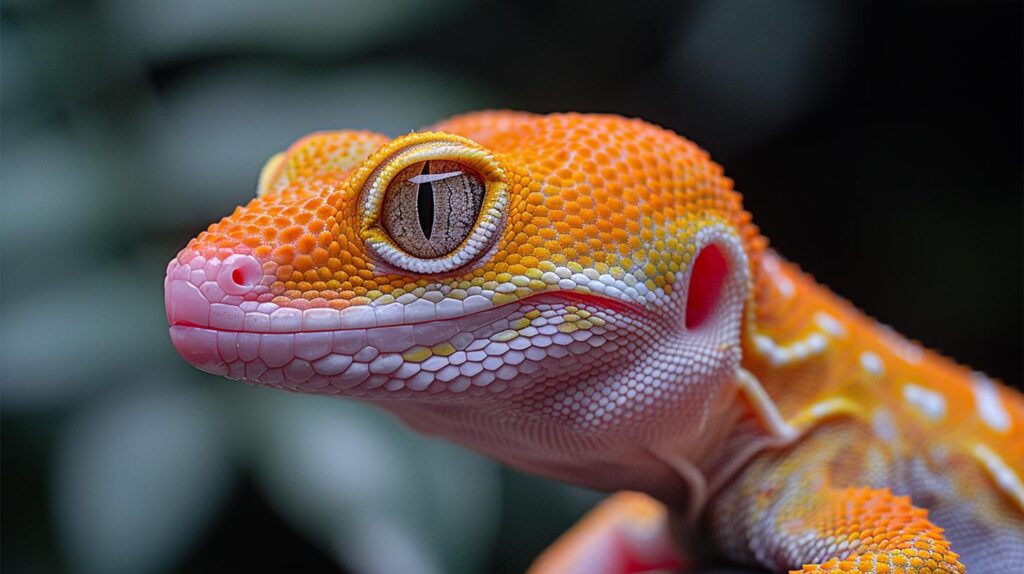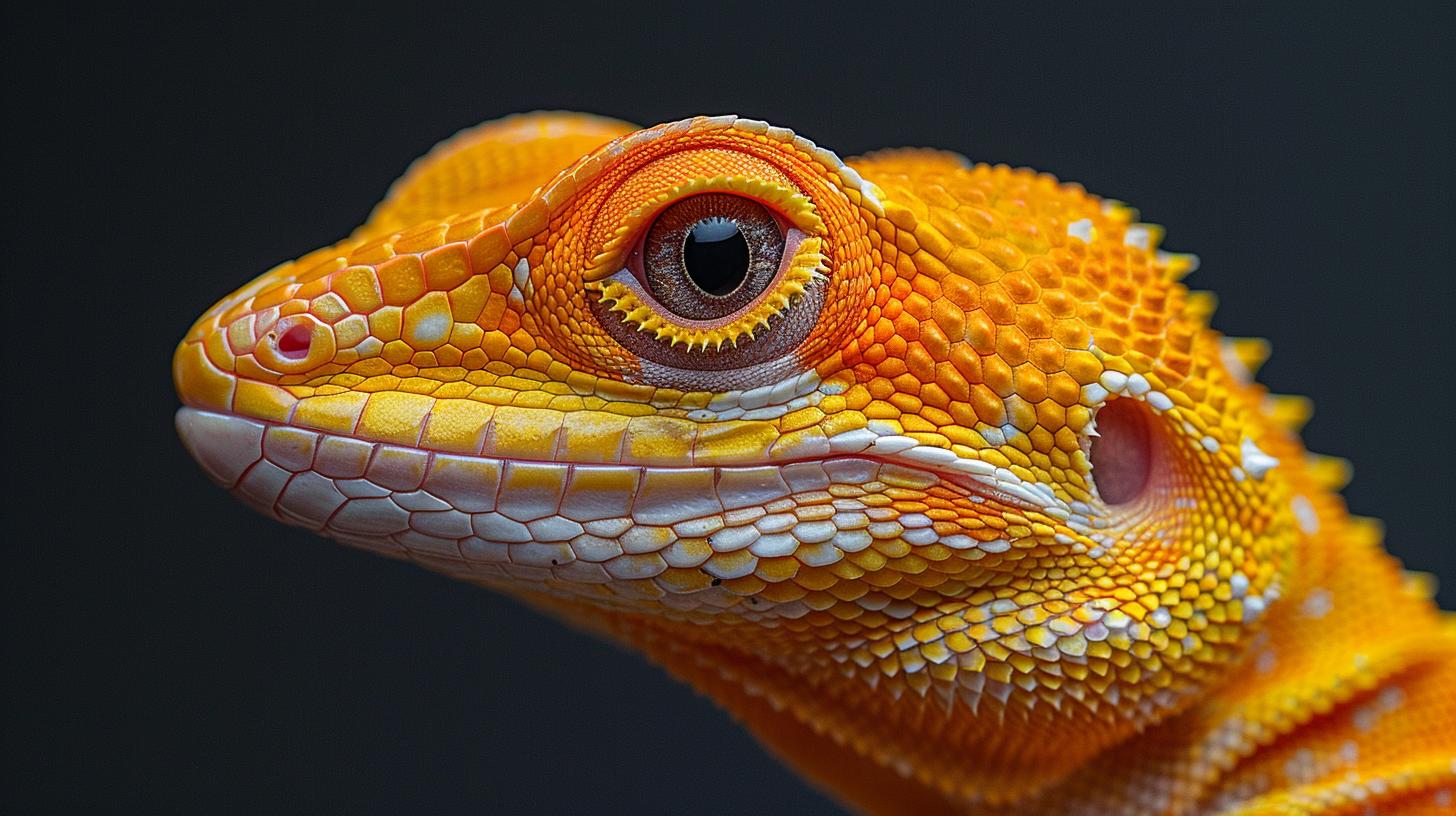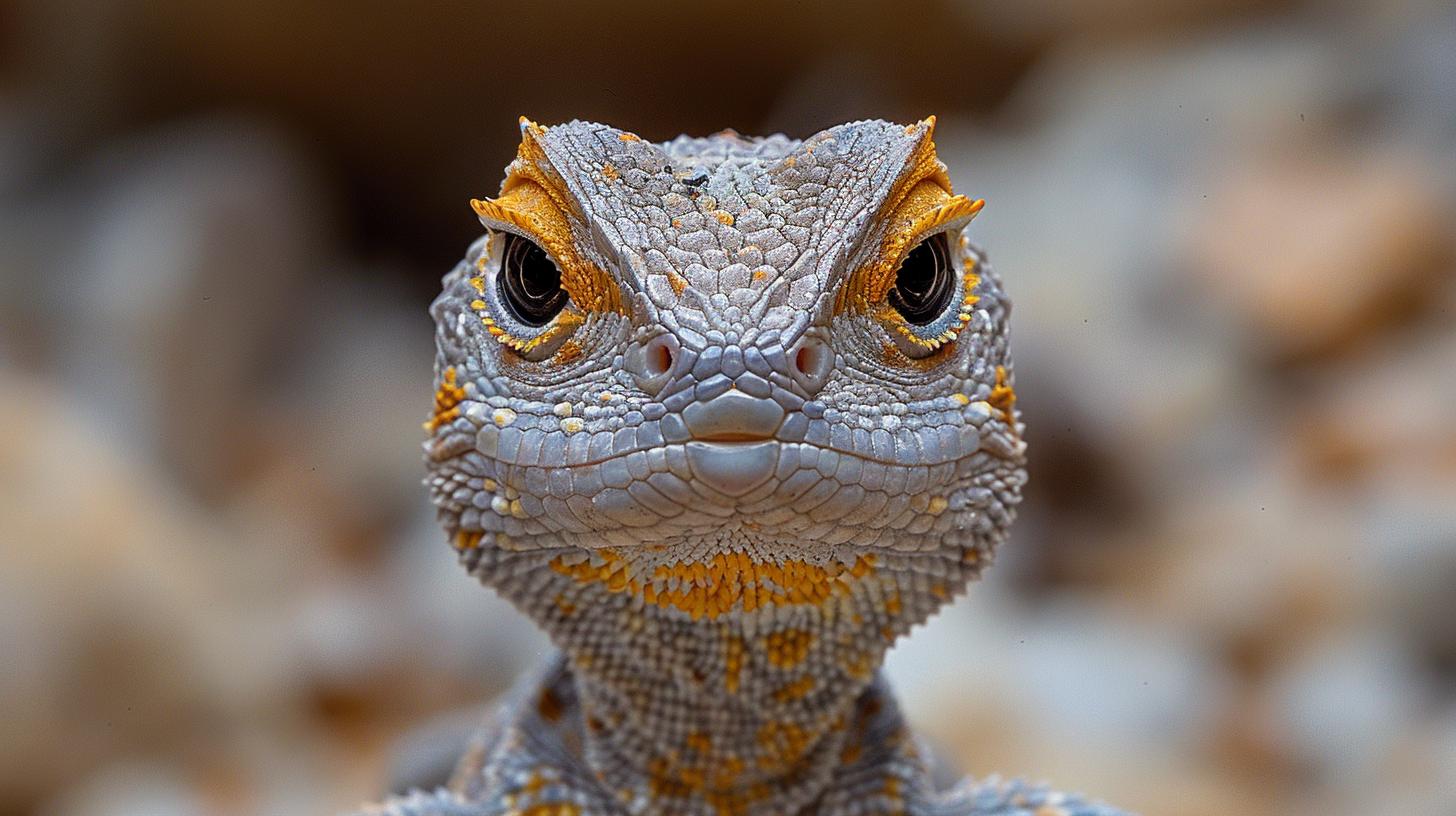Quick First Aid Guide for Injured Reptiles

- Understanding the Unique Needs of Reptiles
- Recognizing Signs of Distress in Reptiles
- The Essentials of a Reptile First Aid Kit
- Immediate Actions After Discovering an Injury
- First Aid for Reptiles Basic Procedures
- When to Seek Veterinary Care
- Creating a Safe and Healing Environment Post-Injury
- Frequently Asked Questions
Understanding the Unique Needs of Reptiles
Discovering the right approach to first aid for reptiles is critical, given their distinct biological and physiological needs. Unlike mammals or birds, reptiles operate on a very different bio-mechanical spectrum, which means that their care-particularly in emergency situations-requires specialized knowledge. This understanding forms the cornerstone of providing effective first aid and is pivotal in ensuring their health and welfare.
Reptiles' unique biology, including their cold-blooded nature and often cryptic behavior, can sometimes make diagnosing issues more challenging for owners. The scale-covered creatures might not show distress in ways that are immediately recognizable to those more familiar with warm-blooded pets.
Recognizing this, it becomes evident why an informed approach to recognizing signs of injury or illness is paramount. From visible wounds to subtler signs like refusal to eat or abnormal lethargy, knowledge of what red flags to look for can be life-saving.
Furthermore, establishing a well-stocked reptile first aid kit is another essential step in preemptively preparing for potential injuries or health issues. Just as with any pet emergency kit, the contents should cater specifically to reptilian needs-ranging from antiseptic solutions safe for use on scales to various tools like tweezers for removing debris from wounds.
Knowing how to promptly and properly respond after identifying an injury can markedly influence the outcome, minimizing stress for both the reptile and its caregiver during those critical first moments post-injury.
Recognizing Signs of Distress in Reptiles
| Signs of Distress | Recommended First Aid Action |
|---|---|
| Lethargy or decrease in normal activity | Ensure optimal habitat temperature; observe for further symptoms |
| Visible injuries (cuts, bruises, broken limbs) | Gently clean the wound with antiseptic wipes; apply sterile gauze if necessary |
| Lack of appetite | Maintain a stress-free environment; monitor and consult a vet if persists more than 2 days |
Identifying signs of distress in reptiles is critical for providing timely and effective *first aid* care. Unlike mammals, reptiles often do not show immediate or obvious reactions to injury or sickness, making it all the more vital for their caregivers to recognize subtler signs of discomfort. One common indicator is a significant change in behavior - such as lethargy or a noticeable decline in standard activities.
This change might be due to various reasons ranging from environmental stresses to internal injuries. For instance, a reptile that normally greets its owner but has suddenly become reclusive may be signaling that something is wrong.
Physical signs are another crucial area to monitor closely. Visible injuries like cuts, bruises, or even discrepancies in limb movement can indicate trauma that requires attention. Such circumstances underscore the importance of having a first aid kit designed specifically for reptiles - equipped with items like antiseptic wipes and sterile gauze - ready at hand. Reacting swiftly by cleaning any wounds and applying the necessary bandages can prevent infections and further complications.
Moreover, behavioral changes such as *a lack of appetite* could suggest internal issues or stress-related conditions needing investigation. In cases where the cause isn't immediately apparent, creating a calm and stable environment can help alleviate stress-induced symptoms while monitoring continues for possible escalations.
Here, understanding your reptile's usual habits becomes invaluable as deviations form these routines often signal health concerns. The table presented succinctly outlines these distress signals alongside recommended first-aid actions, functionally serving as an indispensable quick-reference guide for reptile caretakers aiming to address their pet's needs effectively until professional veterinary care can be sought if necessary.
The Essentials of a Reptile First Aid Kit
Building a comprehensive first aid kit for reptiles is not just about being prepared; it's an act of commitment to the health and well-being of your pet reptile. Unlike the more common pets like dogs and cats, reptiles have specific needs that must be addressed with caution and knowledge. This segment of our article dives into the vital components of a reptile first aid kit, ensuring owners can provide immediate care when needed.
A well-equipped reptile first aid kit should include several key items:
- Sterile gauze and bandages: For covering wounds or stopping bleeding.
- Antiseptic wipes or sprays: It's imperative to choose products safe for use on reptiles to avoid skin irritation or other adverse reactions.
- Tweezers and scissors: These are essential for removing debris from wounds and cutting bandages to size, respectively. Ensure the scissors are sharp enough to cut cleanly but stored safely.
- Reptile-safe electrolyte solution: To prevent dehydration, especially in cases of diarrhea or vomiting.
- Digital thermometer and heat packs: Maintaining appropriate body temperature is critical for recovery in cold-blooded animals like reptiles.
The above list outlines the foundational items required in any *first aid kit for reptiles*, but these supplies alone might not suffice in every scenario. Knowing how to use each item effectively is equally important as having them readily available. For example, when applying antiseptic solutions, ensure minimal amounts are used, and avoid sensitive areas such as the eyes unless the product specifically states it's safe for such use.
After assembling the core elements of your first aid kit, attention should then turn to how these supplies are stored. A durable, waterproof container that can be securely sealed will protect your supplies from damage or contamination. Inside this container, organize your items in a way that makes them easily accessible - during emergencies, time is often of the essence. Labeling compartments within your kit can further expedite finding what you need quickly.
This section has emphasized preparations that can be made at home to manage minor injuries or ailments effectively. However, always remain vigilant about signs that point towards more serious conditions requiring professional veterinary care. Equipping yourself with knowledge and essential supplies will not only help in providing *first aid for reptiles* but also instill confidence in handling challenging situations until professional help is sought.

As we progress further in this guide, we'll explore immediate actions following an injury to ensure safety and minimize stress for your pet-a critical step before applying any first aid procedures outlined here.
Immediate Actions After Discovering an Injury
When you discover that your reptile is injured, the steps you take within the first few minutes can significantly impact its recovery. Bearing in mind the unique needs of reptiles, one must proceed with caution and informed action. The initial step is to gently remove the reptile from any immediate danger or stress-inducing environment. This includes separating it from other animals that might pose a threat or cause further stress.
Creating a safe space for the injured reptile involves ensuring that the temperature and humidity of its temporary habitat are conducive to its species-specific needs. Reptiles are ectothermic, meaning they rely on external heat sources to regulate their body temperature. Adjusting these environmental factors is crucial for their recovery process after suffering an injury.
Once you've secured a safe environment, the next pivotal step involves *assessing the severity of the injury*. For minor injuries such as superficial cuts or abrasions, first aid for reptiles can be commenced at home. A basic first aid kit for reptiles should include:
- Antiseptic wipes to clean wounds
- Sterile gauze for dressing or gently applying pressure to stop any bleeding
- Reptile-safe antibiotic ointment for preventing infection
- Disposable gloves for hygiene purposes
It's important to handle your injured pet as minimally and as gently as possible during this process, avoiding any unnecessary stress that could exacerbate its condition. Cleaning any wounds with care, applying antiseptic wipes or solutions carefully, and monitoring the animal closely after administering first aid are critical steps in this initial phase.
For injuries that appear more severe, such as deep wounds, potential fractures, or if your reptile exhibits signs of distress like labored breathing or lethargy after minor treatment attempts, seeking professional veterinary care immediately becomes necessary. While providing first aid for reptiles at home can address minor concerns effectively, understanding when professional intervention is required underscores responsible pet ownership.
As this section outlines immediate actions following an injury, it leads into considerations on how best to manage more complex issues requiring veterinary assistance and creating long-term recovery plans in subsequent segments of this guide.
First Aid for Reptiles Basic Procedures
The physical and emotional well-being of our reptilian companions hinges on our ability to provide prompt and effective care in the wake of an injury. The domain of first aid for reptiles is a critical knowledge area that every reptile owner should familiarize themselves with.
This section aims to impart essential first aid techniques that can be lifesaving for injured reptiles, ensuring they receive the immediate attention necessary before professional veterinary care can be sought. Understanding how to execute basic first aid procedures not only aids in stabilizing the condition of the reptile but also mitigates further complications, setting a strong foundation for recovery.
Given the unique physiology and needs of reptiles, it's imperative that first aid actions are carried out with precision and mindfulness. The following subsections will delve into some fundamental procedures tailored specifically for them, encapsulating everything from wound management to handling fractures temporarily. While these guidelines serve as an interim measure, remember that they do not replace professional veterinary intervention.
Cleaning and Disinfecting Wounds
One common scenario faced by reptile owners is dealing with cuts or abrasions their pets might suffer. In such cases, gentle cleaning of the wound assumes paramount importance.
Begin by using lukewarm water to carefully rinse any debris or foreign substances from the injury site; following this initial cleansing, an application of a reptile-safe antiseptic solution helps prevent infection. When undertaking this task, ensuring minimal stress for your pet is crucial - sudden movements or harsh handling could exacerbate their condition or lead to additional harm.
Controlling Bleeding
Should your reptile experience bleeding due to an injury, acting swiftly to control it is critical. Employ soft sterile gauze to apply gentle pressure on the bleeding site-this tactic aids in clot formation which eventually stops the blood flow. However, it's vital to monitor how much pressure you're applying; too much could cause pain or further damage, especially considering the delicate nature of many reptiles' bodies.
Creating Temporary Splints
In instances where you suspect a limb fracture or dislocation, immobilizing the affected area can be beneficial until you're able to access veterinary services. Constructing a temporary splint from materials like popsicle sticks (for smaller reptiles) offers stabilization; however, this must be executed with utmost caution and regard for your pet's comfort level-it's generally advisable only if moving your pet is absolutely necessary and should be done without exerting undue pressure on the injury site.
By equipping yourself with knowledge on these basic first aid procedures for reptiles, you're taking a significant step towards safeguarding their health in emergency situations. It underscores your commitment as a caretaker to ensuring their safety and well-being through meticulous yet compassionate intervention while navigating the period before expert care becomes available.
When to Seek Veterinary Care
In the journey of caring for a reptile, recognizing when an injury or illness transcends the capabilities of home care and requires professional veterinary assistance is pivotal. While minor ailments can often be managed with diligent first aid for reptiles, there are specific symptoms and situations that signal the need for a more expert level of medical intervention.

Understanding these nuances not only ensures the immediate well-being of your scaly companion but also contributes to its long-term health and vitality.
Distinguishing between cases that demand veterinary attention versus those amenable to home treatment challenges most reptile owners at some point. The key lies in closely monitoring the animal's behavior, physical condition, and response to initial first-aid efforts. A swift response can significantly impact outcomes, highlighting why it's crucial to err on the side of caution when assessing the severity of any health issue.
Visible Injuries and Abnormal Behaviors
When injuries are visible, such as deep cuts, burns, or fractures, it becomes immediately apparent that a veterinarian's expertise is necessary. Similarly, signs like significant changes in behavior-abnormal aggression, continuous lethargy, or refusal to eat over extended periods-are alarming indicators.
Reptiles commonly mask their illnesses as a survival strategy in the wild; thus, by the time these symptoms become noticeable, urgent professional care might be required. It's here that understanding and vigilance from the owner become instrumental in safeguarding their pet's health.
Signs of Possible Internal Issues
Internal issues may not always present with clear external signals but can be just as life-threatening if left unaddressed. Symptoms such as recurring digestive problems (e.g. chronic constipation or diarrhea), breathing difficulties, sudden weight loss, or swelling in any part of the body should raise red flags. These signs suggest complications like respiratory infections, internal parasites or other severe conditions warranting immediate veterinary assessment.
The Limitations of Home Care
Despite one's best efforts in administering *first aid*, there are limits to what can be achieved outside professional settings. Certain injuries or illnesses require diagnostic tools inaccessible to hobbyists-such as blood tests or X-rays-in order to formulate an accurate diagnosis and treatment plan.
It is imperative for reptile owners to recognize these limitations early on and seek veterinarian assistance accordingly without delay. This proactive step ensures that all possibilities are explored for diagnosing underlining issues effectively using advanced medical technology available at veterinary clinics.
Creating a Safe and Healing Environment Post-Injury
As we conclude our journey through the essential guide to first aid for reptiles, it becomes clear that understanding the distinctive needs of these fascinating creatures is paramount. The unique biological and physiological makeup of reptiles demands a specialized approach to care, especially in times of distress.
Reflecting on the information provided, from recognizing signs of trouble to the meticulous construction of a reptile-specific first aid kit, one thing stands out: preparation and knowledge can significantly influence outcomes in emergency situations.
Acknowledging the nuances in behavior and symptoms of distress in reptiles not only empowers owners but also fortifies the bond between them and their scaled companions. Implementing immediate actions post-injury with delicacy underscores the importance of creating a stress-free healing ambiance within their habitat.
Furthermore, mastering basic procedures for administering first aid permits caretakers to confidently manage minor wounds while discerning when professional veterinary intervention is necessary. These skills ensure not only survival but also the wellbeing of these remarkable animals during critical moments.
Embarking on this educational odyssey highlights our commitment to enhancing care for all creatures great and small. We invite you to traverse further into our expansive library of articles where knowledge awaits to transform care for your beloved pets.
Delve into expert tips, comprehensive guides, and insightful stories designed to enrich your journey as a compassionate caretaker. Your next step toward becoming an adept guardian for your reptilian friend begins here-immerse yourself in our collection dedicated to fostering resilience, understanding, and love within the diverse world of pet ownership.
Frequently Asked Questions
What Do You Put on Reptiles Cuts?
When treating cuts on reptiles, it's important to use products that are safe and will not irritate their skin or cause further harm. A thin layer of diluted betadine or chlorhexidine can be applied initially to clean the wound.
This should be followed by an application of a topical antibiotic ointment that is labeled as safe for reptiles, such as silver sulfadiazine cream. Always avoid using products containing alcohol, hydrogen peroxide, or cortisone as they can be harmful.
What Is the First Aid for Lizards?
The first step in lizard first aid involves gently cleaning any wounds with diluted betadine or chlorhexidine to reduce the risk of infection. This should be done with care to avoid causing more stress or injury to the lizard.
Keeping the lizard warm and minimizing stress by providing a quiet, secure environment is also crucial during recovery. If injuries appear severe or if the lizard exhibits signs of illness following an injury, consulting a veterinarian experienced with reptiles is necessary.
What Ointments Are Safe for Reptiles?
Safe ointments for reptiles mainly include those that are non-irritating and specifically designed not to interfere with their unique skin properties. Silver sulfadiazine cream is widely recommended for its antibacterial properties and safety in treating superficial burns and wounds on reptiles without causing additional stress or harm to their delicate skin.
Neosporin (the original formula, without pain relief additives) is another option considered safe for minor cuts and abrasions; however, veterinary consultation is advised before application.
How Do You Disinfect a Reptile Wound?
Disinfecting a reptile wound starts with carefully removing any debris from the area using sterile saline solution. After clearing the wound, applying a diluted antiseptic solution such as betadine or chlorhexidine can help prevent infection while being gentle on the reptile's skin.
It's important to dilute these solutions according to recommended guidelines since full strength preparations may cause irritation or tissue damage in some cases.
Leave a Reply
You must be logged in to post a comment.